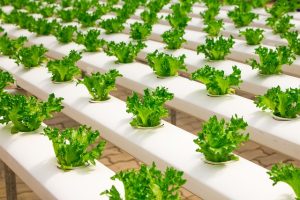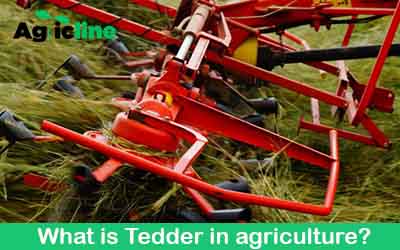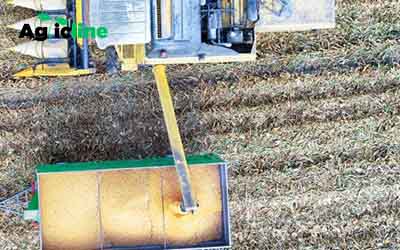The benefits of technology in farming cannot be over estimated. Generally, understanding these farming technology in India and how they have facilitated in effectiveness and efficiency is my cardinal point in this blog post.
It should not come as a surprise to you that Indian farmers are faced with several challenges ranging from but are not limited to climatic change, lack of good drainage, and lack of funding.
The good news is, amidst these challenges, there is always a complimentary technology available to alleviate these challenges and facilitates up scale in agricultural production.
Farming in India
Farming methods in India have evolved over time as a result of technological advancements that have made farmers’ life easier. Socio-cultural practices, climate conditions, and other factors have all contributed to Indian farming innovation.
In India, both traditional and contemporary farming practices are currently used. Precision farming and other sustainable farming technologies increase productivity. Not only that, but they also reduce prices and provide food security.
Today’s farmers are better able to manage the variable weather, eroding soil, and water scarcity that have long plagued Indian agriculture. Modern farming technologies have supported rural development and economic progress, in addition to creating new opportunities for entrepreneurship.
The use of technology has helped most Indian farmers in order to gain a sustainable farming season and also help improve their farm yield. Indian farmers now rely heavily on this technology, some of which are Drones. These are little flying devices that photograph crops from above.
This allows farmers to see if there are any crop problems. For example, they may notice bug infestations or plants that require water.
Another technology used is Precision Farming, which checks the health of their crops using smart sensors and data. They will be able to use less water and less chemicals, such as fertilizers and pesticides, as a result. They save money while simultaneously helping the environment.
Common Farming Technology In India
Here are the common modern agricultural practices that are gaining popularity among farmers most especially in India.
Precision Farming
Precision farming, often known as satellite farming, is a modern farming approach that manages crop output using technology.
This method of farming adopted by Indians helps monitor crop health, soil moisture, and nutrient levels using data analysis, satellite imaging, and sensors.
Farmers in India can use this data to form agricultural plans that maximize crop yield while minimizing waste.
Precision farming also ensures that your farming equipment is used to its full potential for maximum production.
Hydroponics
Hydroponics is another common farming practice in India in which plants are grown in a nutrient-rich water solution rather than soil.
This Approach enables crop production all year and can be employed in metropolitan settings with limited space.

Because water is recycled throughout the system, hydroponics uses less water than traditional growing methods.
One advantage of hydroponics farming has given to farmers in India is that it allows farmers to control plant nutrient levels, resulting in larger yields and better-tasting food.
Aquaponics
Aquaponics is the third type of farming used by farmers in India which consists of mixed aquaculture (fish farming) and hydroponics.
This process fertilizes the plants with fish excrement, and the plants purify the water for the fish.
This results in a closed-loop system that reduces waste while also providing fish and crops for consumption.
Aquaponics farming in India is a reliable technique that requires less water and land than other types of farming.
One of its advantages is it processes two products which are fish and crops making it a big gain for the farmer in India.
Drones and satellite imagery
High-resolution cameras and sensors aboard drones may collect detailed photos of fields.
These photos aid in determining crop health, detecting pest and disease outbreaks, and determining irrigation requirements. Satellite photography allows farmers to monitor huge areas and make data-driven decisions by providing a larger perspective.
Farm management software
Specialized software tools aid farmers in efficiently managing their operations. These tools allow them to plan and track activities, manage inventories, assess financials, and streamline logistics, all of which improve farm management overall.
Genetic engineering and biotechnology
Biotechnology advances have resulted in the introduction of genetically modified (GM) crops with better features like disease resistance, drought tolerance, and higher nutritional value. These crops provide higher yields while using less pesticides.
Solutions for data analytics
The collecting and analysis of vast amounts of data from farm operations has become critical in making informed decisions.
Farmers may optimize their farming techniques, avoid risks, and maximize earnings by analyzing data on weather patterns, crop performance, soil conditions, and market trends.
Roles of Technology in Farming in India
The role technology plays in the advancement, development and better yielding in agricultural products in India has been important and has transformed the agricultural sector in so many ways. here are few of it;
Improved Crop Yield
Technology has enabled farmers in India to increase their yields by using advanced tools and techniques such as precision agriculture, which involves the use of sensors, drones, and GPS to monitor crop growth and optimize inputs such as water, fertilizer, and pesticides.
Enhancement of Crop Quality
Techniques such as Genetic Engineering have enabled the introduction of specific strains into other genes of crops or animals. Such genetic engineering increases crop resistance to pests (for example, Bt Cotton) and droughts.
Sustainable Farming Practice
Farmers can use technology to embrace sustainable farming practices, minimize their carbon footprint, and prevent soil damage.
Resources Efficiency
Farmers may employ technology to adopt sustainable farming practices, reduce their carbon footprint, and protect their land. Precision agriculture, for example, can help to reduce the amount of pesticides used in crop production, while crop rotation and cover cropping can help to improve soil health.
Intelligent Supply Chain Management:
Farmers may use technology to connect with buyers and optimize their supply chains, reducing waste and increasing profitability.
For example, eNAM is an online platform that connects farmers with buyers, reducing the role of intermediaries and improving pricing transparency.
Improved Quality and Safety
Using techniques like computer vision and deep learning to monitor and grade crops, farmers may improve the quality and safety of their products.
Improve Socio-Economic Status Of Farmer
Technology can help farmers enhance yields and profitability through increasing production, lowering expenses, and improving efficiency in farming processes. This, in turn, has the potential to enhance their economic situation and way of living.
Provision of Information
With the aid of technology both Farmers and its customers can get access to information needed and also markets.
For example, mobile apps can provide Farmers Information about weather forecasts and the market price of commodities.
Prevents rural Migration
Technology can also help to decrease the drudgery of farm work, making it more appealing to younger generations who would otherwise look for work elsewhere. This can help to keep young people in rural regions and avoid rural-urban migration.
Challenges Faced Deploying Technology In Indian Agriculture
Now let talk about some challenges facing the deployment of Technology Indian Agriculture, they include;
- Education and Training Related
Due to the lack of knowledge and inadequate skills among farmers concerning the use of Technology it is a significant challenge.
- Poor Infrastructure
Poor infrastructure, lack of storage and inadequate transport facilities can also be a key challenges facing the deployment of technology.
- Economy and Financial Issue
Due to the lack of money, inaccessibility to loans from banks makes it hard for farmers to be able to get access to the technologies.
- Climate and Environmental Vulnerability
India is vulnerable to climate change, thereby making farmers face challenges relating to poor soil fertility, natural disasters such as flood, droughts, hail. These challenges may limit the effectiveness of agricultural technologies.
Conclusion on farming technology in India
We are regularly warned that the world’s population is booming and increasing at an alarming rate. As a result, new agricultural advances are required to secure the survival of our species.
Crop researchers, farmers, and governments around the world will be focusing on developing innovation and new technology to boost global crop yield, support smallholder farmers, and reduce agriculture’s environmental effect over the next decade.



